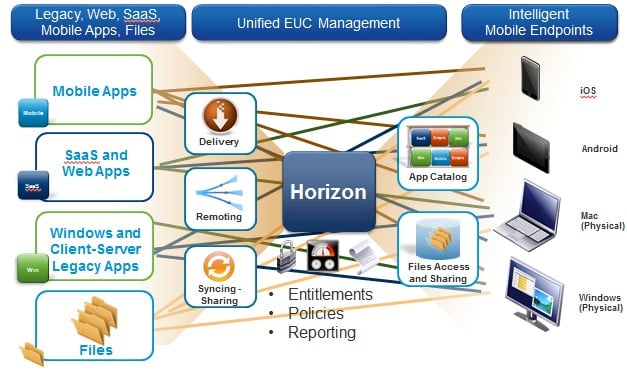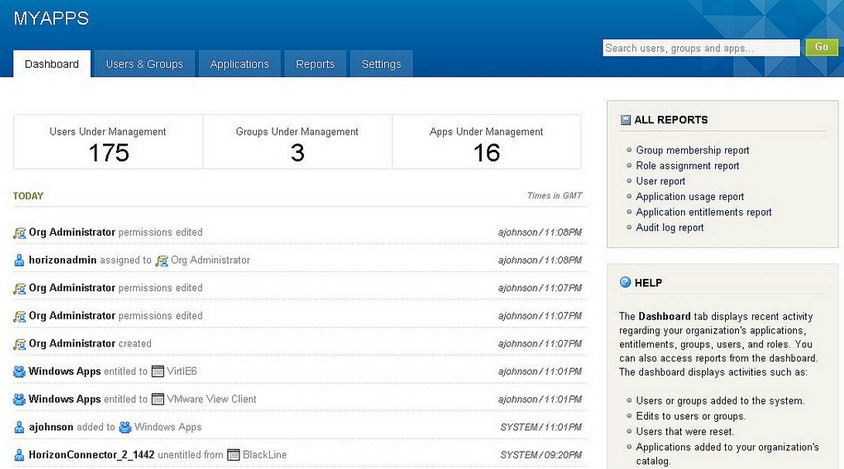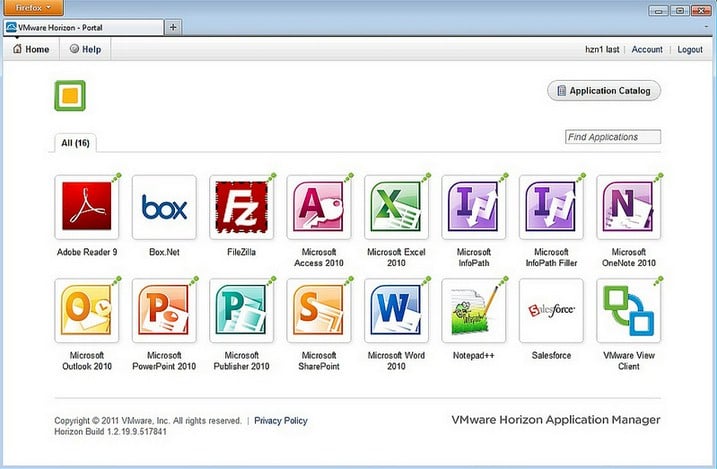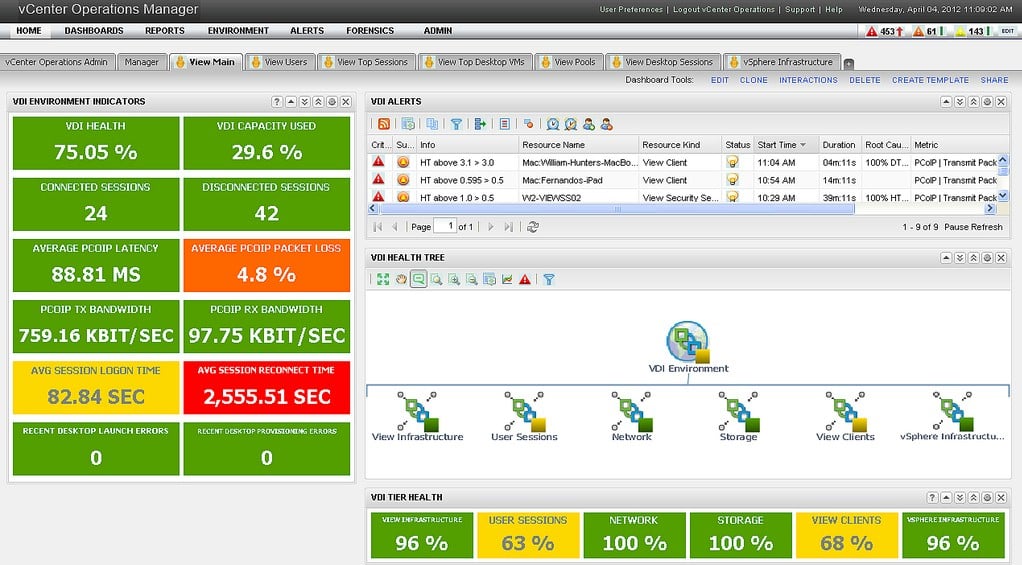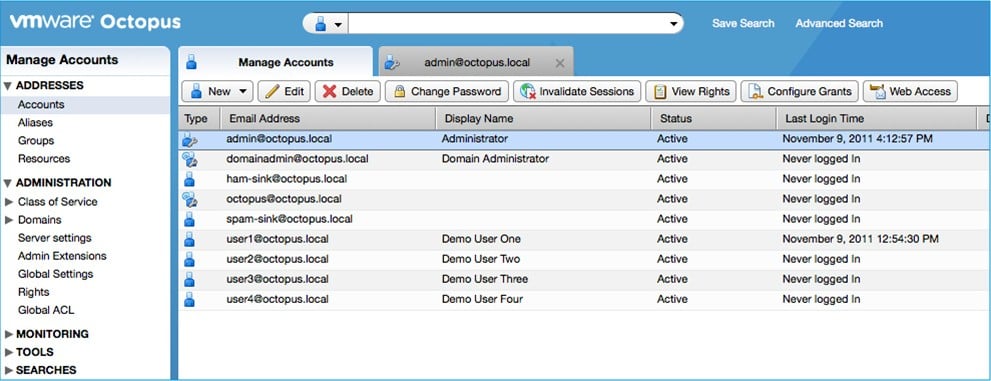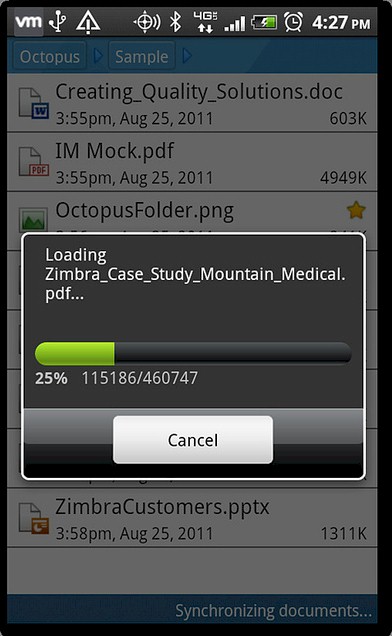Original URL: https://www.theregister.com/2012/05/02/vmware_horizon_view_octopus_update/
VMware gussies up View and Horizon post-PC virty tools
Project Octopus file sharing goes beta
Posted in SaaS, 2nd May 2012 19:23 GMT
Server virtualization juggernaut VMware pretty much owns the hypervisor and management tools market for enterprise data centers on x86 iron, but if it wants to keep parent EMC and therefore Wall Street happy, it can't rely on servers alone.
At some point, vSphere can only grow as fast as the server market itself, and then where will VMware be? If the plan goes well, peddling a whole bunch of interconnected tools for giving users access to applications and files from any device they happen to have handy, according to the company.
"Welcome to the post-PC era," Vittorio Viarengo, vice president of end user products at VMware, told El Reg in a demo of the new software from its New York offices ahead of the launch. "It's messy. Just deal with it."
This plan includes its Horizon Application Manager, its Project Octopus enterprise-grade file sharing, and its View virtual desktop infrastructure (VDI) applications. All of these are in various stages of completion and sophistication, but are also being integrated to provide a single way to manage the hairball of access to all kinds of applications (running on servers, PCs, or the cloud) and files in a button-down manner that enterprises expect.
Horizon, in fact, is how VMware desperately wants you to deal with it.
Last May, VMware rolled out the central hub for controlling end user access to applications and files, called "Project Horizon" and then commercialized as the Horizon Application Manager. Horizon owns up to the fact that companies are control freaks (laws require it, after all), and they need control freakery software to say who has access to what applications and files residing on the internal network as well as applications and files that are running outside the corporate firewall.
They also want a single place where end users can "buy" access to services, much as we do apps and files on iTunes, and keep track of who is using what so all of the licensing to software and SaaS apps is compliant with contracts with vendors. This kind of plumbing doesn't necessarily excite users all that much, but without it, the boss is not going to let you hook your devices into the corporate network.
The edition of Horizon, which is itself a SaaS app that costs $60 per user per month, that was available to early access customers back in May was pretty barebones, offering a central LDAP server inside the firewall to authenticate access to internal IT apps and SaaS apps running outside. This was done either through the Security Assertion Markup Language (SAML) variant of XML or an enterprise connector that VMware cooked up and dropped into an ESXi virtual machine that acts as gatekeeper, in conjunction with LDAP.
Horizon could also provision Google Apps users. Over time, the plan was to integrate provisioning and user account control for View VDI and ThinApp application streaming images, and then move on to other stacks. It becomes the Swiss army knife of access to apps and files.
Last August VMware updated Horizon App Manager, the number of SaaS apps that have SAML connectors ready for Horizon was boosted from 15 to 45 in the May release. The August tweak (Horizon maddeningly does not have release numbers) also allowed for apps to be pushed to Android devices as well as using the Horizon Mobile type 2 hypervisor for Android (formerly known as MVP) that VMware bought and now controls.
With Horizon App Manager 1.5, which Vittorio Viarengo, vice president of end user products at VMware pitched to El Reg as a "personal cloud broker," VMware is adding the promised ability to do ThinApp application provisioning, and VMware is working on support for Microsoft's App-V and Citrix Systems' XenApp alternatives.
The new View 5.1 VDI stack also snaps into Horizon App Manager, and perhaps more importantly, the vCenter Operations Manager console plug-in for the vSphere server virtualization stack now knows how to reach into View and do troubleshooting on desktop performance. It will also tweak resources to keep pesky end users working from virtualized PC instances from driving network admins nuts.
View 5.1 has a number of other enhancements, and perhaps the most important of these is called View Storage Accelerator. This makes use of a feature in the ESXi 5.0 hypervisor called content based read cache (CBRC) that stores common blocks of storage from a VDI image being used by a client in the hypervisor's own stash of virtual memory. So when thin clients or PCs whack the VDI image back in the data center for particular files, they come straight out of memory rather than out through I/O devices (which still have slow speeds and then another layer of virtualization overhead to boot).
This CBRC feature is particularly helpful during boot storms and antivirus scan storms, where all the PCs might be asking for the same files at nearly the same time. View 5.1 also adds a new USB redirect for Windows machines that no longer requires a special driver to be installed on the Windows box. Radius two-factor authentication (for those of you who aren't provisioning View seats through Horizon App Manager) is now part of the View Connection Server.
Scaling up View for 10,000 virty PCs
There are a bunch of other tweaks and touches to View 5.1, many of them to help with the management of larger VDI setups with thousands and thousands of seats.
The View Composer tool, which is used to create PC images for VDI streaming, can now be run in its own dedicated server, distinct from the View console itself. The View Connection Server can now log events to a syslog instead of to a database, which also makes it run faster and makes the data available in a format that a big data muncher like Hadoop or the Splunk service can chew on it.
VMware has also boosted the scalability of a single View management domain to up to 32 ESXi hosts using NFS file systems and 8 ESXi hosts using VMFS data stores. Depending on the underlying servers, you can get about 10,000 seats under one View management domain with the enhancements. VMware has explained the scalability enhancements in detail in this blog post by John Dodge, technical marketing lead at VMware.
View 5.1 and Horizon Application Manager 1.5 will be available at the end of the second quarter.
VMware is also moving its "Project Octopus" enterprise-grade file sharing service into full beta, but is not yet talking about when it will be snapped into Horizon and available as a standalone product. VMware is taking time to get the integration right, explained Viarengo.
Viarengo demoed the Octopus file sharing on his own Macbook and Android phone, showing how as he tweaked files, they would be nearly instantly available to the other devices hooked to Octopus. The AT&T network did not have enough coffee that morning, for sure.
VMware gave a sneak peek at the Octopus file sharing service, which is based on the Zimbra email server back-end and file synchronization features of the Mozy file backup service back in August 2011 at VMworld in Las Vegas.
Octopus will have native clients coded for Windows and Mac OS PCs as well as for iOS and Android smartphones and tablets; presumably Windows tablets are also in the works, should they take off in the market with Windows 8. Octopus will also be plugged into View as an external file sharing service for streamed PCs and with be provisioned through Horizon App Manager if IT managers want to lock down access to it on the corporate network.
Odds are, they will. Kiss your Dropbox goodbye and smooch the Octopus. ®
